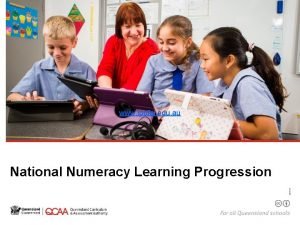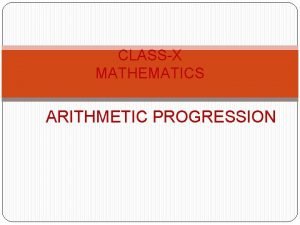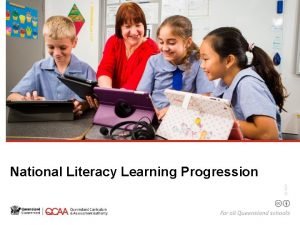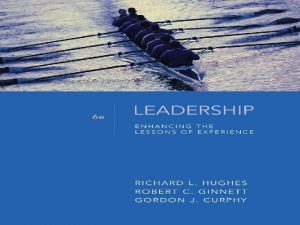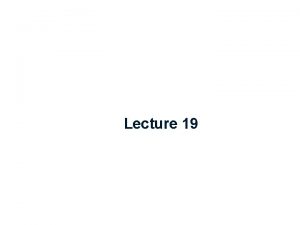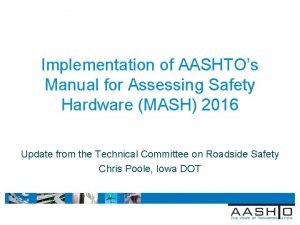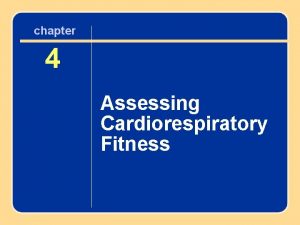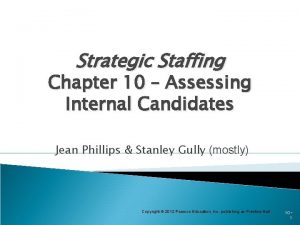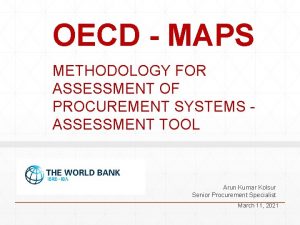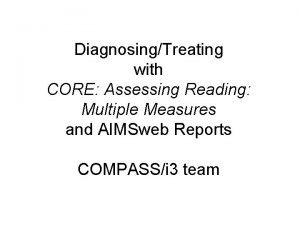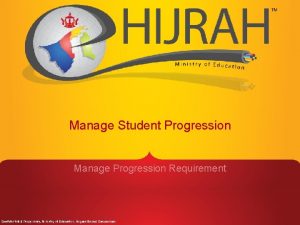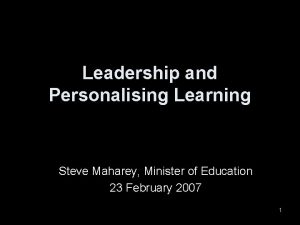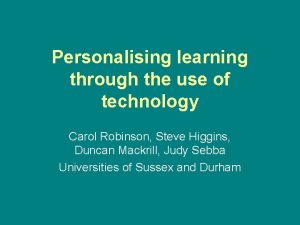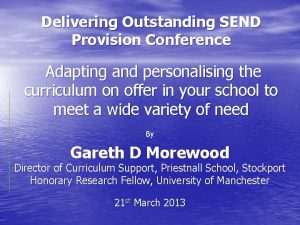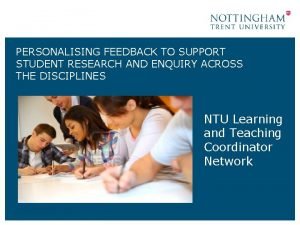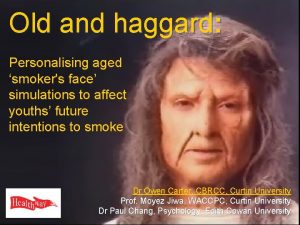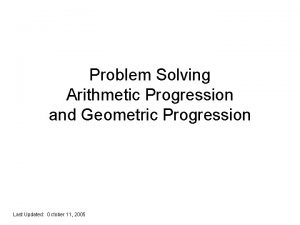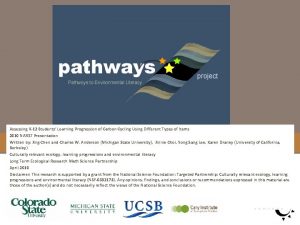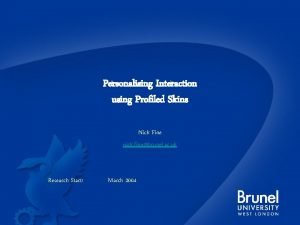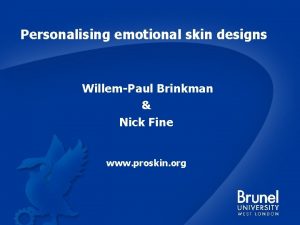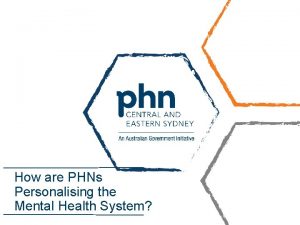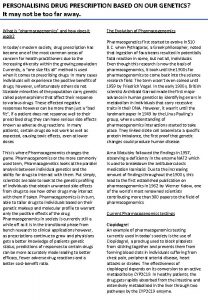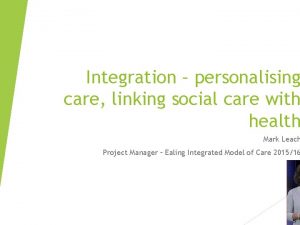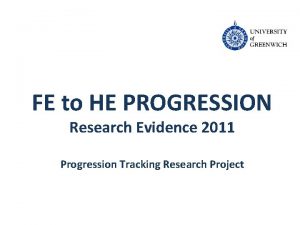Personalising Learning and Assessing Progression in RE How



















- Slides: 19

Personalising Learning and Assessing Progression in RE How to ensure good RE in the new curriculum context S

According to HMCI Christine Gilbert, in the Teaching and Learning 2020 Review, personalised learning (PL) is: ‘Taking a highly structured and responsive approach to each child's and young person's learning, in order that all are able to progress, achieve and participate. It means strengthening the link between learning and teaching by engaging pupils – and their parents – as partners in learning. ’

It is helpful to consider five components of PL: 1. assessment for learning; 2. effective teaching and learning; 3. curriculum entitlement and choice for pupils; 4. changes to the organisation of a school, such as workforce remodelling; 5. going ‘beyond the classroom’ into the community through initiatives such as extended schools. 'Assessment for Learning'. See http: //schools. somerset. gov. uk/re_sows/

1. Assessment FOR learning involves: S gathering and interpreting evidence about pupils’ learning; and S learners and their teachers using that evidence to decide where pupils are in their learning, where they are going and how to take the next steps. (QCA and the Assessment Reform Group, 2001)

2. Effective teaching and learning involves: S helping pupils know how they are doing; S encouraging pupils to make progress; S helping teachers plan to meet pupils’ learning needs, S ensuring standards are maintained in RE; S raising standards in RE; S improving pupils’ learning experiences; S supporting the school’s overall strategy in providing a broad and balanced picture of individual pupils’ educational progress.

3. Curriculum entitlement and choice: S as an integral, ongoing and informal part of teaching, through, for example: S conversations with pupils about what they know and can do; S questions differentiated to provide opportunities for pupils of differing abilities to demonstrate their knowledge and understanding; S gathering information from pupils’ self and peer assessment activities. S as a formal, planned activity, through, for example: S an initial assessment of what pupils already know and can do, e. g. , through a ‘mind-map’; S differentiated tasks linked to the ‘levels’ in the syllabus; S summative tests; S pupil interviews.

4. Workforce remodelling and other changes. Sample strategies (1): S ensure that learning objectives are clear in advance of each assessment activity, so that pupils responses can be easily related to those objectives; S be very focused on what it is you are assessing, e. g. , by limiting the number of objectives to be assessed; S instead of recording every pupil’s achievement, record only those which failed to meet or which exceeded the expectation; S be flexible about classroom organisation so the majority of the class may be working while you assess a small group or individual pupils;

4. Workforce remodelling and other changes. Sample strategies (2): S conduct interviews with a sample of pupils representing different ability levels to assess their learning over a longer period of time; S be aware that there a variety of ways in which pupils can demonstrate their skills, knowledge and understanding and teachers can record their achievements; S across a whole year’s programme it is expected that pupils’ progress in both attainment targets will have been assessed.

Going ‘beyond the classroom’. Consider: S an initial assessment at the beginning of a unit to establish a baseline; S a formal assessed task towards the end of a unit to provide information about progress and standards being achieved. This will allow time for pupils to reflect on what they have learnt and for teachers to adjust their planning appropriately; S making links with parents/carers through, e. g. , a short questionnaire about the forthcoming programme of learning for RE.

Assessment of RE in the new secondary curriculum and assessing pupil progress (APP) In the new secondary curriculum, there should be more opportunities for pupils to cross subject boundaries and to engage in learning beyond the school. See ‘Sacred Spaces’ at www. lotc. org. uk/

Why use APP? Teachers have identified the following benefits of APP: S It gives a detailed profile of what a pupil can do in relation to the assessment focuses – see the six ‘key concepts’ or fields of enquiry’ in RE; S It enhances subject knowledge and promotes a broader curriculum; S It directly informs future planning, teaching and learning; S It provides greater clarity and understanding of targets, progress and feedback; S It reduces reliance on testing. See: http: //nationalstrategies. standards. dcsf. gov. uk/app

Attainment in RE is also about: S the development of positive attitudes such as those listed in the QCDA non-statutory programme of study and in all locally agreed and aided schools syllabuses; S attitudes of curiosity and fairness, for example, are not necessarily covered in the level statements, but are certainly worthy of encouragement and recognition; S some aspects of ‘attainment’ in RE may remain hidden. It is not the task of the teacher to grade pupils on their level of ‘spirituality’, for example. Teachers can only work with what is communicated, but should be sensitive to the variety of ways in which pupils may communicate their thinking.

Evidence of pupils’ attainment in RE can be gathered from the whole range of learning experiences: writing, art work, oral responses to reflective experiences, hot-seating, ‘diamond nines’, check-list activities, role plays, mind maps, circle-times and debates, surveys, matching activities and so on Find ‘Spirited Arts’ at www. natre. org. uk/spiritedarts/

Methods of recording pupils’ work and progress include: S recording names of pupils at either end of the achievement spectrum; S using a mark-book with learning objectives listed in the columns; S providing pupils with self- and peer-assessment sheets; S making digital records, making ’comment books’ to scribe comments from pupils as they contribute to a discussion or debate. These can then be displayed.

Activities which are designed to be assessed should provide information about what further experience pupils need and what they need to practice, as well as what they can do already. Remember that feedback giving guidance on how each pupil can improve, plus time to do so, is of more value than grading or giving marks.

More formally, assessment information might also be used to: S plan the next stage of a class’s work, taking account of the mix of ability within the class, and of the need to challenge all pupils to make progress; S report on pupils’ attainment and progress, using a list of simplified level statements: http: //betterre. reonline. org. uk/assessment/cando. php) bank of comments to guide pupils’ learning. as a

Designing your own assessment activities (1): 1. select the sequence of lessons to be assessed; 2. use your agreed or aided schools programme of study to select a suitable point on which to focus the assessment activities; 3. spend some time (preferably with colleagues) developing a good Key Question; 4. note the ‘context’ of the assessment, indicating the relevant learning that has already taken place;

Designing your own assessment activities (2): 5. decide the area of focus for the assessment from the A - F ‘Key Concepts’ for the Unit as appropriate for your syllabus. You should focus on TWO areas; 6. use your syllabus learning objectives or a list of simplified ‘Can-Do’ levels to fill in the range of level descriptors. You could focus on just ONE statement for the ‘majority class expectation’, or, THREE different levels; 7. design inclusive activities to fit the descriptors, bearing in mind your Key Question.

Designing Assessable Activities Focus on TWO of the fields of enquiry and select an appropriate range of ‘can-do’ statements to guide your activity design. Here is an example of how it might work: KEY QUESTION: Can religious art change people’s lives? Focus areas: C & E PLTS: Self-managers & Creative thinkers Context All pupils should: In work on the crucifixion in Christianity and the three marks of existence in Buddhism, pupils have considered such concepts as inspiration, love, sacrifice, anatta, anicca, dukkha, and examples of Christian and Buddhist symbolism. LEVEL DESCRIPTORS (Objectives for learning and assessment) C 5 I can use a wide religious vocabulary in suggesting reasons for the similarities and differences in forms of religious, spiritual and moral expression found within and between religions. C 6 I can use correct religious and philosophical vocabulary in explaining what the significance of different forms of religious, spiritual and moral expression might be for believers. E 5 E 6 Most pupils should: (Majority class expectation) seek advice from believers in making comparisons between two different symbols of religious belief; generate their own questions about these symbols and give answers from their own and other perspectives. I can ask questions about the meaning and purpose of life and suggest answers which relate to the search for truth and my own and others’ lives. by a set date, produce a portfolio of Buddhist and Christian designs with explanations linking symbolism and belief; write a summary of their own views on the most important ideas being expressed in the designs. I can use reasoning and examples to express insights into my own and others’ views on questions about the meaning and purpose of life and the search for truth. Full list of statements: http: //betterre. reonline. org. uk/assessment/cando. php Some pupils could: Choose a personally challenging medium such as a poem or a multi-media presentation to interpret a favourite piece from the portfolio and hypothesise why it might help believers understand more about life’s deep questions. C 7 I can use a wide religious and philosophical vocabulary as well as different of forms of expression in presenting a clear picture of how people express their religious, spiritual and ethical beliefs in a variety of ways. E 7 I can give my personal view with reasons and examples on what value religious and other views might have for understanding questions about the meaning and purpose of life.
 Acara numeracy continuum
Acara numeracy continuum Arithmetic sequence summary
Arithmetic sequence summary Australian curriculum progressions
Australian curriculum progressions Cuadro comparativo e-learning b-learning m-learning
Cuadro comparativo e-learning b-learning m-learning Teaching and assessing grammar in the writing classroom
Teaching and assessing grammar in the writing classroom Ppst domain 4 reflection
Ppst domain 4 reflection Assessing strengths and weaknesses
Assessing strengths and weaknesses Assessing a new venture's financial strength and viability
Assessing a new venture's financial strength and viability Assessing leadership and measuring its effects
Assessing leadership and measuring its effects Module 4 topic 1 assessing and managing risk
Module 4 topic 1 assessing and managing risk Module 4 topic 1 assessing and managing risk
Module 4 topic 1 assessing and managing risk Unit 3 assessing risk in sport
Unit 3 assessing risk in sport Unit 18 assessing children's development support needs p1
Unit 18 assessing children's development support needs p1 Assessing need for hrd
Assessing need for hrd Aashto manual for assessing safety hardware
Aashto manual for assessing safety hardware Chapter 4 cultural dynamics in assessing global markets
Chapter 4 cultural dynamics in assessing global markets Assessing cardiorespiratory fitness
Assessing cardiorespiratory fitness A nine box matrix requires assessing employees on ________.
A nine box matrix requires assessing employees on ________. Oecd maps
Oecd maps Assessing reading multiple measures
Assessing reading multiple measures
